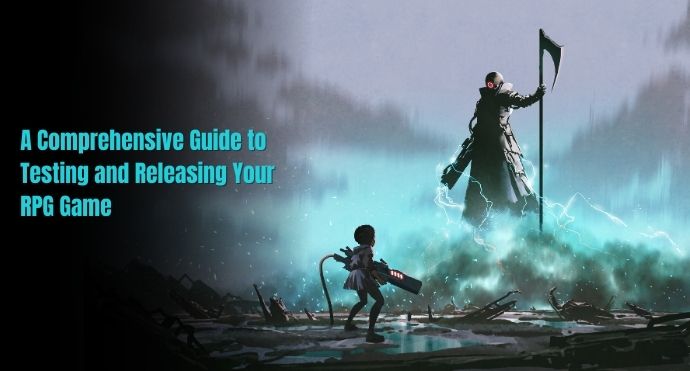The journey from conceptualizing an RPG (Role-Playing Game) to finally launching it into the gaming world is an exciting and intricate process. One of the crucial phases in this journey is the transition from the beta testing phase to the official launch. This guide aims to provide game developers with a comprehensive roadmap to successfully navigate the beta testing and launch stages of their RPG game.
1. Pre-Beta Preparations
Before diving into beta testing, it’s essential to ensure that your RPG game is in a stable and polished state. Addressing critical issues and fine-tuning gameplay mechanics can significantly improve the overall beta testing experience. This phase involves:
Quality Assurance (QA) Testing: Conduct rigorous QA testing to identify and fix bugs, crashes, and performance issues. For instance, when CD Projekt Red was preparing to launch “The Witcher 3: Wild Hunt,” they spent significant time on QA to create a polished and immersive experience for players.
Balancing and Gameplay Optimization: Analyze gameplay data to ensure a balanced and enjoyable experience for players. For example, “Dark Souls” series developer FromSoftware is known for refining its difficulty levels based on player feedback to strike the right balance between challenge and satisfaction.
User Experience (UX) Evaluation: Pay attention to the overall user experience. Intuitive menus, clear tutorials, and a responsive interface contribute to a positive player experience. “Horizon Zero Dawn,” developed by Guerrilla Games, received praise for its user-friendly interface and intuitive controls.
2. Closed Beta Testing
Closed beta testing involves a limited group of players who have access to your RPG game. This phase helps gather valuable feedback and identify any issues that might have been missed during internal testing. Here’s what to focus on:
Player Recruitment: Select a diverse group of beta testers, including experienced RPG players and newcomers. This ensures a wide range of perspectives on your game’s mechanics and difficulty. Blizzard Entertainment’s “World of Warcraft” often selects dedicated players to participate in closed beta tests, ensuring a mix of expertise.
Feedback Collection- Provide beta testers with clear instructions on how to provide feedback. Square Enix, during the development of “Final Fantasy XIV,” established dedicated forums for players to discuss their experiences and offer suggestions.
Bug Tracking:Implement a robust system for testers to report bugs and glitches. Bethesda Game Studios utilized an in-game reporting tool during the closed beta of “The Elder Scrolls Online” to help players easily report issues.
3. Iterative Improvement
Use the feedback from closed beta testers to iterate on your RPG game. Regularly release updates that address bugs, make gameplay refinements, and incorporate requested features. This iterative process demonstrates your commitment to delivering a high-quality game and keeps players engaged.
4. Open Beta Testing
The open beta phase allows a broader audience to access your RPG game. This stage is about stress-testing your servers, fine-tuning gameplay based on a wider array of player feedback, and building anticipation for the official launch. Consider these steps:
Marketing and Promotion: Advertise the open beta to attract players. “Valorant,” developed by Riot Games, gained immense popularity through its open beta due to a strategic partnership with popular Twitch streamers.
Server Scalability: Ensure your servers can handle a potentially large influx of players. Amazon Games Studio faced server capacity issues during the open beta of “New World,” which led to delays and highlighted the importance of robust server infrastructure.
5. Launch Preparations
As the official launch date approaches, there are several critical tasks to complete:
Final Bug Fixes: Devote time to addressing the remaining bugs and glitches identified during the open beta phase.
Performance Optimization: Optimize your game’s performance to ensure smooth gameplay across various hardware configurations.
Marketing Strategy: Develop a comprehensive marketing strategy to create buzz around the launch. CD Projekt Red’s “Cyberpunk 2077” generated enormous anticipation through its marketing campaigns and collaboration with renowned actor Keanu Reeves.
6. Official Launch
The official launch of your RPG game marks the culmination of your efforts. Ensure a smooth launch with these considerations:
Player Support: Have a dedicated support team ready to assist players with any issues they encounter.
Post-Launch Content: Plan post-launch content updates to keep players engaged and excited about the game’s future. “The Outer Worlds,” developed by Obsidian Entertainment, continued to engage players with narrative-driven DLCs after its launch.
Community Engagement: Maintain an active presence on social media and gaming communities to interact with players and gather feedback for future improvements. Grinding Gear Games, the developer of “Path of Exile,” regularly communicates with their player base through forums and Reddit.
In conclusion, the journey from beta to launch for an RPG game is a meticulous process that requires careful planning, effective communication, and a dedication to quality. By following this comprehensive guide and drawing inspiration from real-life examples, you can navigate through each phase with confidence, resulting in a successful RPG game launch that captivates players and leaves a lasting impact on the gaming world.



